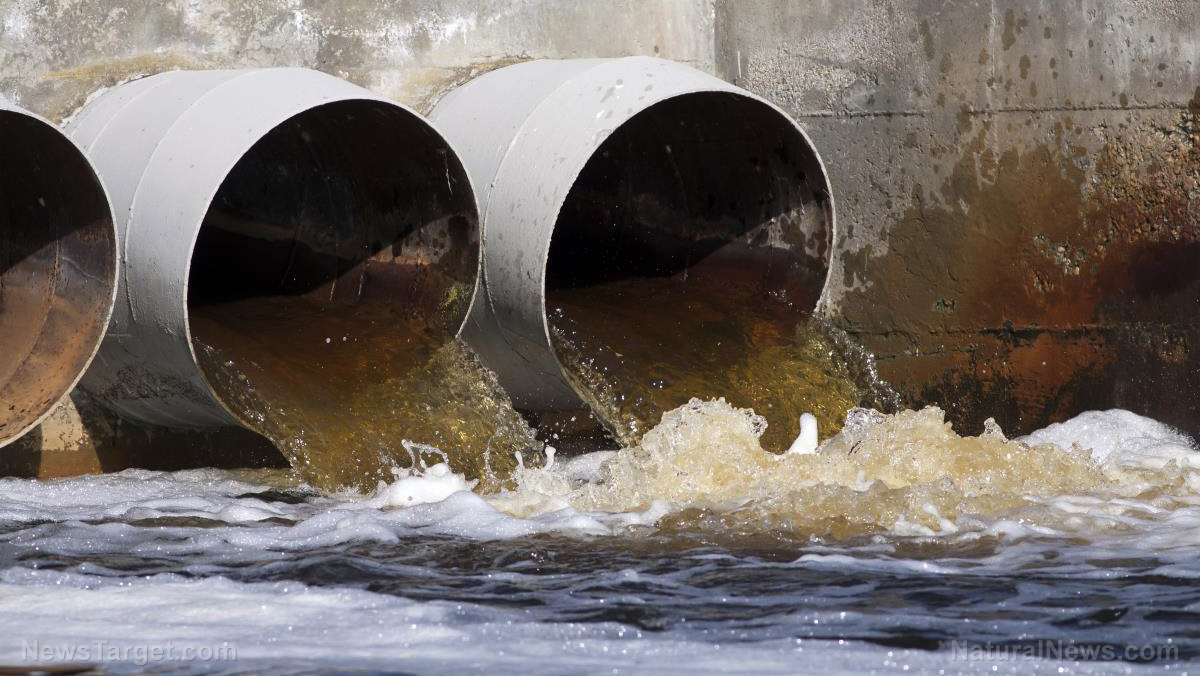Study: Arsenic in water linked to high urinary arsenic levels among Americans
04/25/2023 / By Belle Carter

A study conducted by researchers from Columbia University Mailman School of Public Health has found that water arsenic levels are linked to higher urinary arsenic among Americans who rely on private wells and public water systems.
Published in the journal Environmental Research, the study evaluated the connection between arsenic in private wells and public water supplies using urinary arsenic biomarkers within the U.S. population. It concluded that the highest arsenic concentrations were found in the West and South and among Mexican American and other Hispanic participants. (Related: US water infrastructure is COLLAPSING: Toxic arsenic levels detected in NYC tap water, E. coli in Baltimore water supply.)
“To date, no nationwide study had evaluated the link between drinking water arsenic with arsenic biomarkers in urine to assess how drinking water contributes to arsenic exposure for both regulated community water systems (CWS) and unregulated private wells,” said Maya Spaur, a study co-author and Ph.D. candidate in environmental health sciences.
The researchers evaluated 11,088 participants from the 2003-2014 National Health and Nutrition Examination Survey. For each participant, they assigned a private well and CWS arsenic levels according to the county of residence using estimates previously derived by the Environmental Protection Agency (EPA) and U.S. Geological Survey. Participants also completed an in-person interview, dietary recall and physical examination.
Long-term exposure to arsenic even at low and moderate levels can increase the risk of cancer and other types of chronic disease. In fact, the Department of Health and Human Services (HHS) Agency for Toxic Substances and Disease Registry includes arsenic as a potent carcinogen and toxicant associated with numerous adverse health outcomes.
EPA regulates arsenic in public drinking water supplies and sets the maximum contaminant level (MCL) allowable in public water systems. However, differences in CWS arsenic concentrations persist across the United States.
Experts warn against use of arsenic-laced waste wood in house heating
Previous studies have shown that arsenic is not just found in water, but also in the wood that people use to heat their houses. According to scientists at Imperial College London‘s air research station, many people warming their homes may be unaware that the wood they use from construction sites may contain arsenic.
Dr. Anja Tremper tracked January’s data and found arsenic particles in the air, especially around the weekend of 22-23 when air pollution reached the top index value of 10 on the U.K. government’s scale. “This is part of a long-term pattern. When I investigated the pollution sources in the 2019 and 2020 dataset, I also found arsenic among the chemicals from wood smoke,” Tremper said.
A survey covering 2018 to 2019 for the Department for Environment, Food and Rural Affairs revealed that about nine percent of those who burned wood at home were burning waste wood. Fence panels, pallets, old furniture, doors, door frames and construction wood salvaged from skips were found to be used in heating. However, construction wood is normally treated with preservatives to protect against insects and fungi. Before 2006, the preservatives used frequently contained arsenic, which becomes part of the ash and smoke when the wood is burned.
And the use of these kinds of woods is not just happening in London. Dr. James Allan, who operates Manchester University‘s air research site, also saw arsenic in Manchester that is likely associated with cold weather and the black carbon from wood burning.
In Auckland, New Zealand, scientists have been investigating if people in the city were being exposed to arsenic from wood heating. Despite official warnings, almost 20 percent of homes in Auckland routinely burn construction wood.
Meanwhile, the American Medical Association (AMA) reported an extreme case of arsenic poisoning in a rural Wisconsin family that burned construction wood to heat their home in 1982. The report noted that all eight family members experienced recurring neurological and medical illnesses over three years, especially during the winter months.
“Arsenic, in concentrations of 12 to 87 ppm, was noted in the hair of the mother and father, and analysis of hair and fingernails of all family members demonstrated pathological levels of arsenic,” the AMA report stated. “For four years the five-room home had been heated with a small wood stove in which outdoor or marine plywood and wood remnants had been preferentially burned. Stove ashes that contained more than 1,000 ppm of arsenic contaminated the living area, and the ratio of copper, chromium, and arsenic pentoxide in this ash matched the ratio used in the chromium-copper-arsenate-treated wood.”
Watch the video below that talks about arsenic found in bottled water and food.
This video is from the 100% Clean Food Lifestyle channel on Brighteon.com.
More related stories:
It’s in the water: Arsenic found in drinking water can lead to heart failure.
Whole Foods selling bottled water contaminated with dangerous levels of arsenic.
Sources include:
Submit a correction >>
Tagged Under:
arsenic, clean water, Collapse, drinking water, heating, poisons, private water, public water, Toxic, toxic water, waste wood, water supply, water system
This article may contain statements that reflect the opinion of the author
RECENT NEWS & ARTICLES
COPYRIGHT © 2017 EPA WATCH



















